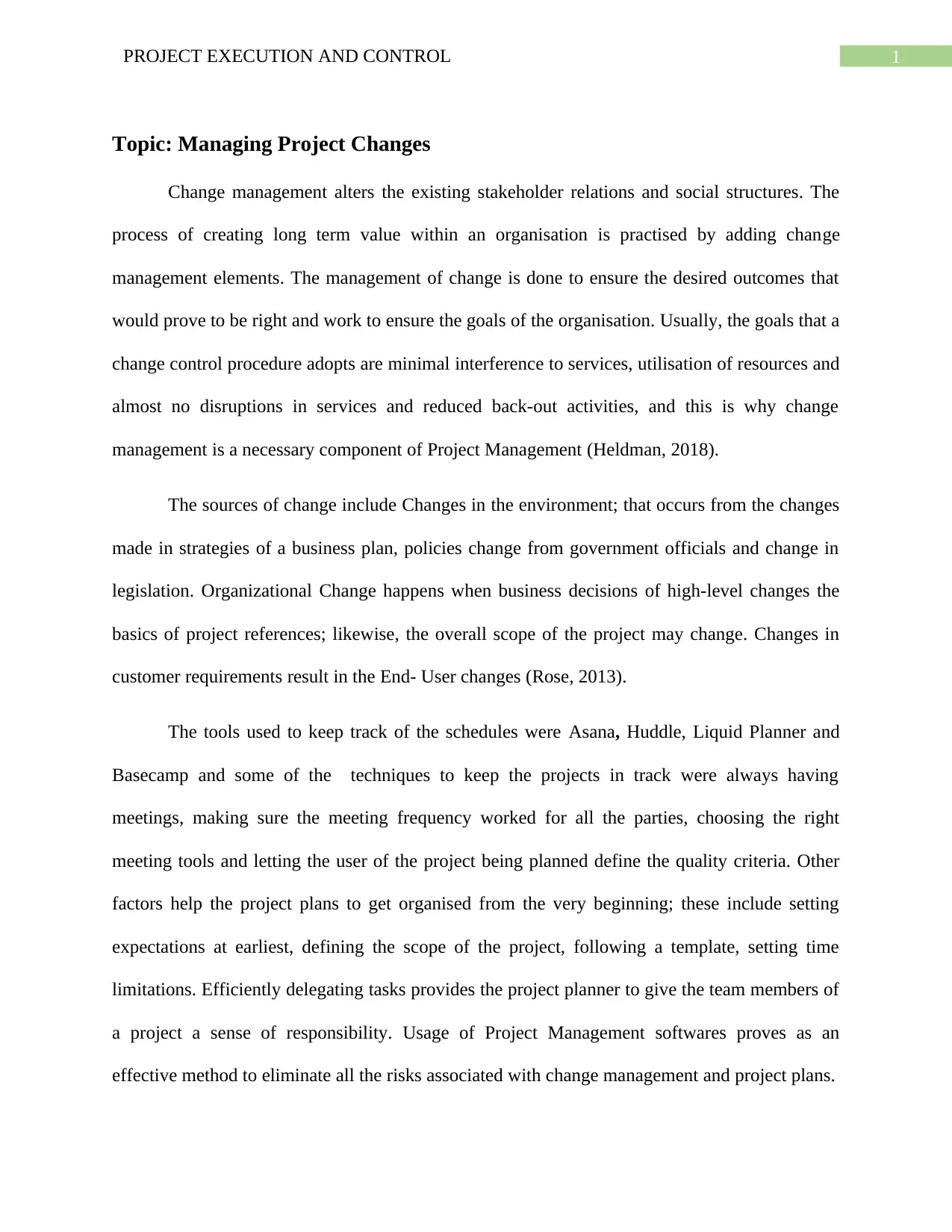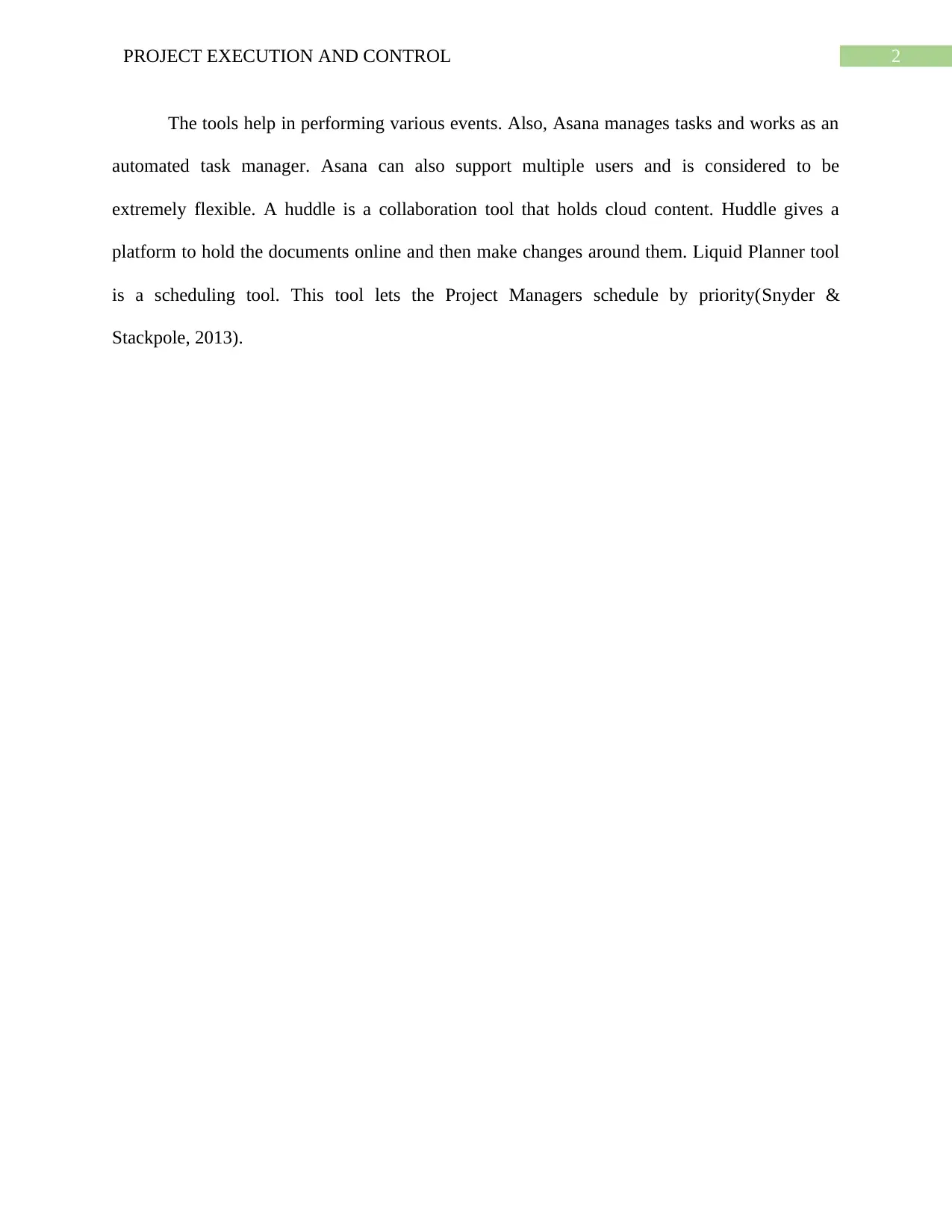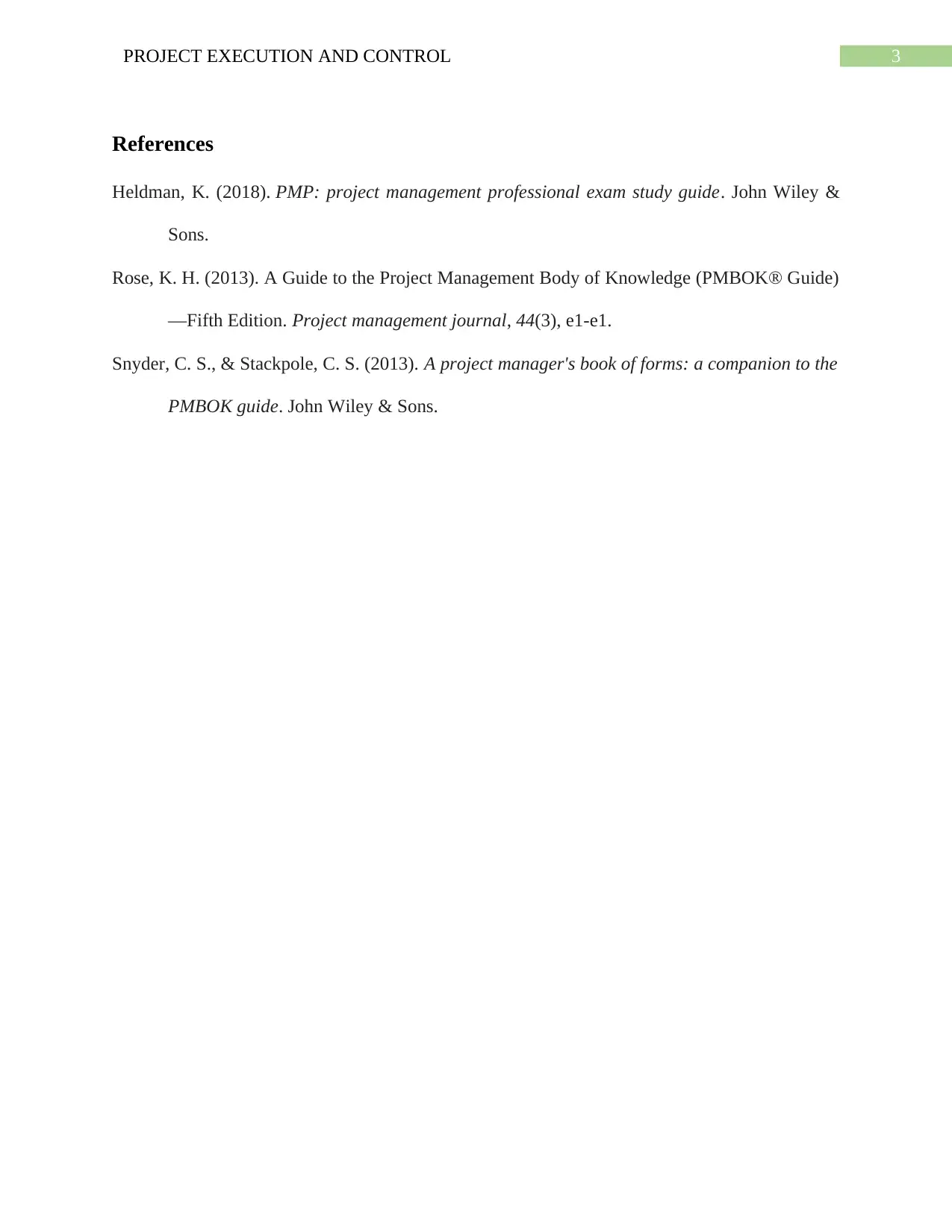Project Execution and Control Report: Managing Project Changes
VerifiedAdded on 2022/11/27
|4
|537
|103
Report
AI Summary
This report addresses the critical aspects of project execution and control, emphasizing the importance of change management within project frameworks. It explores the sources of change, including environmental shifts, organizational adjustments, and evolving customer requirements. The report highlights the necessity of change management in project management, detailing the processes and strategies for analyzing, assessing, and managing project changes effectively. Furthermore, it discusses various tools and techniques, such as Asana, Huddle, and Liquid Planner, used to maintain project schedules, delegate tasks efficiently, and mitigate risks associated with change management. The report underscores the significance of setting expectations, defining project scope, and utilizing project management software to ensure projects stay organized and achieve desired outcomes.
1 out of 4











![[object Object]](/_next/static/media/star-bottom.7253800d.svg)